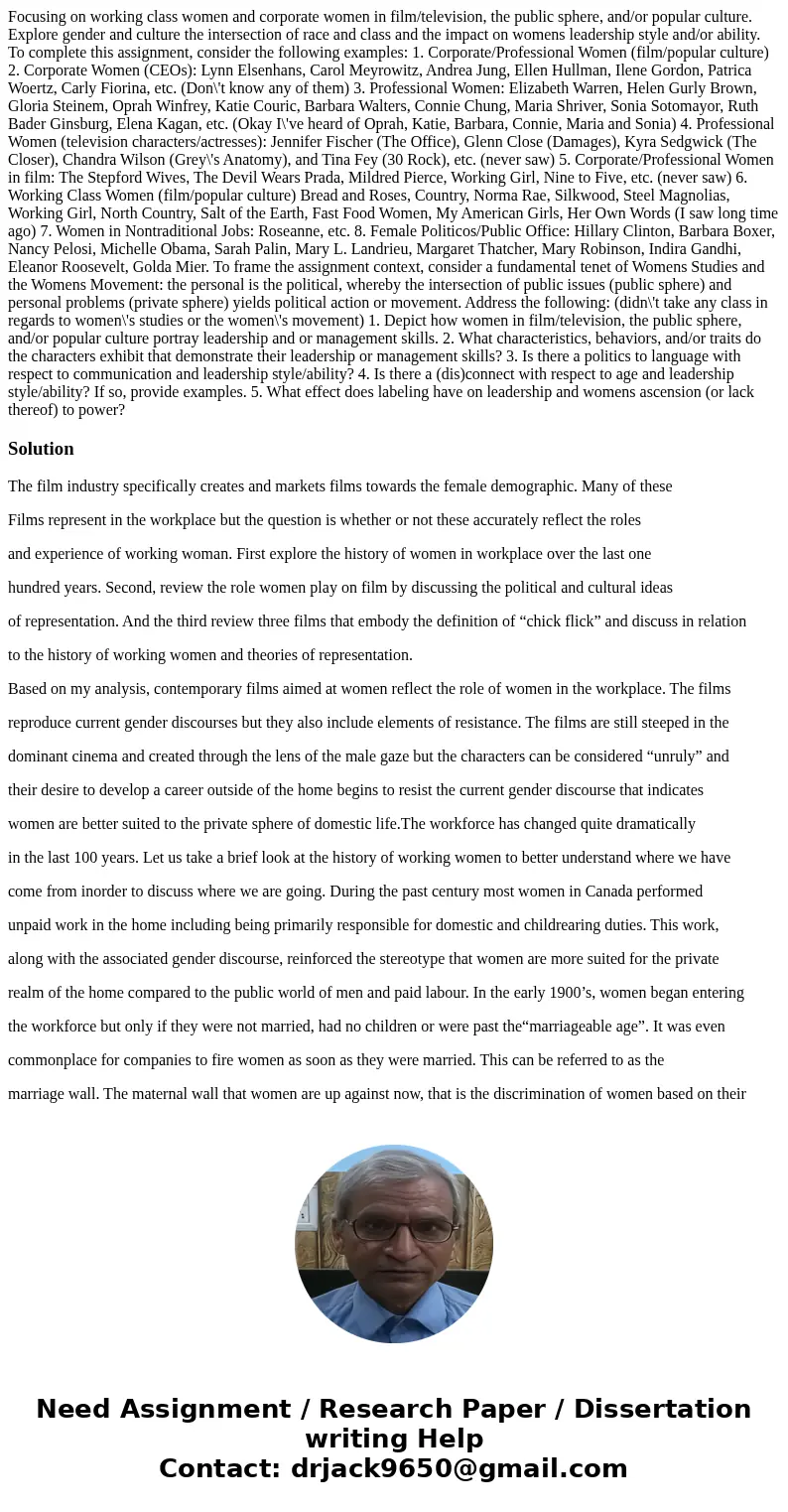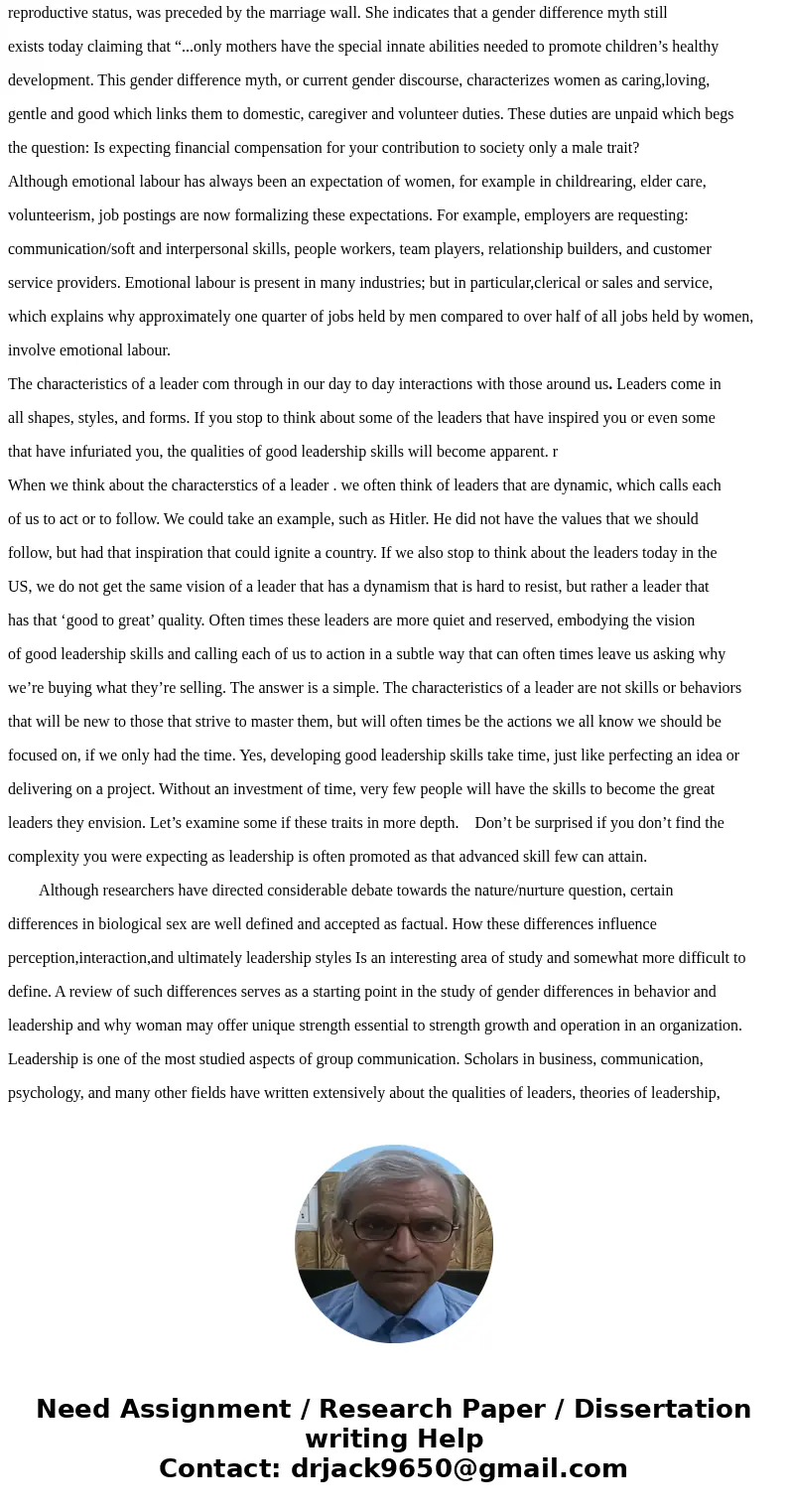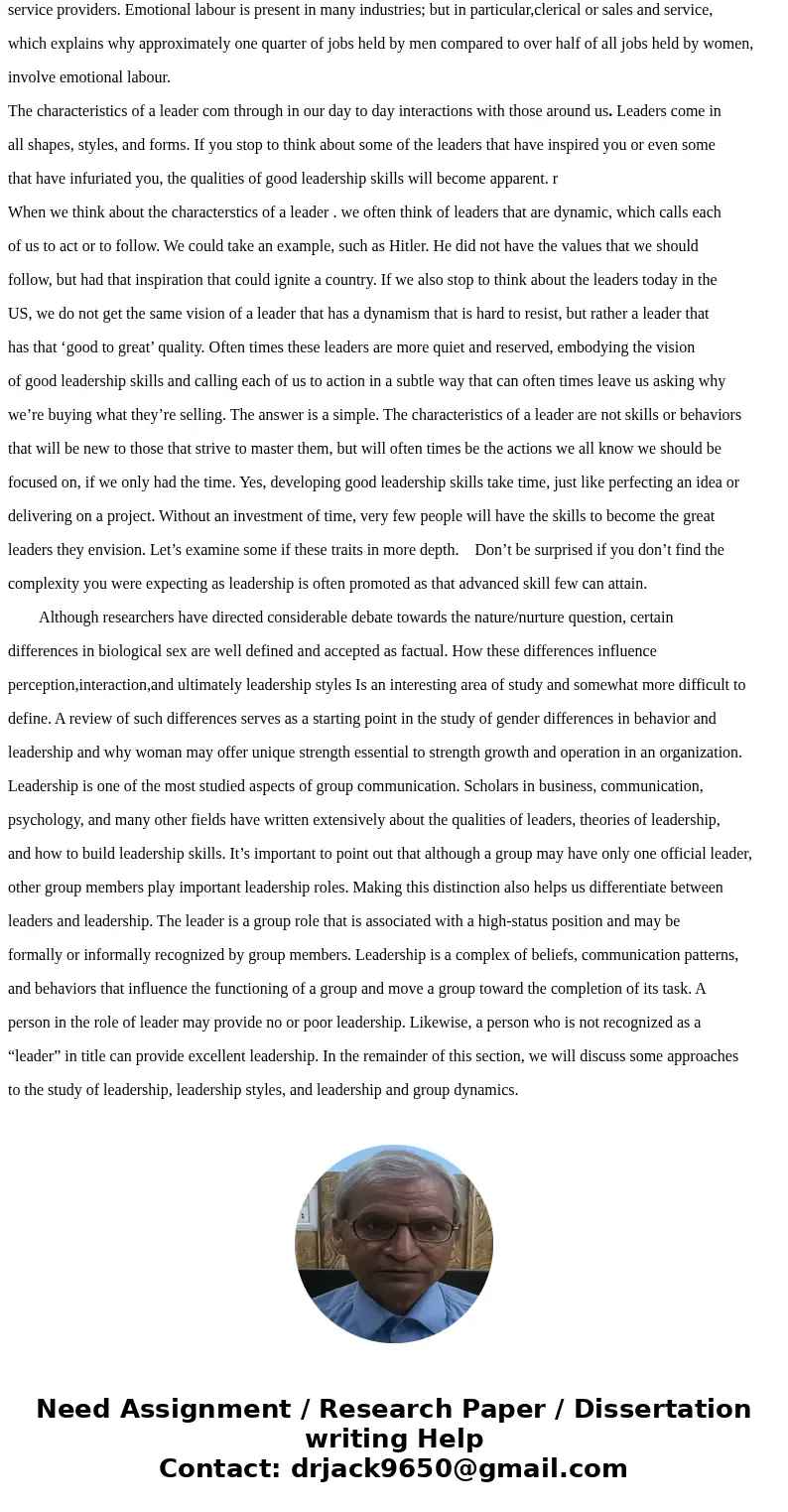Focusing on working class women and corporate women in filmt
Focusing on working class women and corporate women in film/television, the public sphere, and/or popular culture. Explore gender and culture the intersection of race and class and the impact on womens leadership style and/or ability. To complete this assignment, consider the following examples: 1. Corporate/Professional Women (film/popular culture) 2. Corporate Women (CEOs): Lynn Elsenhans, Carol Meyrowitz, Andrea Jung, Ellen Hullman, Ilene Gordon, Patrica Woertz, Carly Fiorina, etc. (Don\'t know any of them) 3. Professional Women: Elizabeth Warren, Helen Gurly Brown, Gloria Steinem, Oprah Winfrey, Katie Couric, Barbara Walters, Connie Chung, Maria Shriver, Sonia Sotomayor, Ruth Bader Ginsburg, Elena Kagan, etc. (Okay I\'ve heard of Oprah, Katie, Barbara, Connie, Maria and Sonia) 4. Professional Women (television characters/actresses): Jennifer Fischer (The Office), Glenn Close (Damages), Kyra Sedgwick (The Closer), Chandra Wilson (Grey\'s Anatomy), and Tina Fey (30 Rock), etc. (never saw) 5. Corporate/Professional Women in film: The Stepford Wives, The Devil Wears Prada, Mildred Pierce, Working Girl, Nine to Five, etc. (never saw) 6. Working Class Women (film/popular culture) Bread and Roses, Country, Norma Rae, Silkwood, Steel Magnolias, Working Girl, North Country, Salt of the Earth, Fast Food Women, My American Girls, Her Own Words (I saw long time ago) 7. Women in Nontraditional Jobs: Roseanne, etc. 8. Female Politicos/Public Office: Hillary Clinton, Barbara Boxer, Nancy Pelosi, Michelle Obama, Sarah Palin, Mary L. Landrieu, Margaret Thatcher, Mary Robinson, Indira Gandhi, Eleanor Roosevelt, Golda Mier. To frame the assignment context, consider a fundamental tenet of Womens Studies and the Womens Movement: the personal is the political, whereby the intersection of public issues (public sphere) and personal problems (private sphere) yields political action or movement. Address the following: (didn\'t take any class in regards to women\'s studies or the women\'s movement) 1. Depict how women in film/television, the public sphere, and/or popular culture portray leadership and or management skills. 2. What characteristics, behaviors, and/or traits do the characters exhibit that demonstrate their leadership or management skills? 3. Is there a politics to language with respect to communication and leadership style/ability? 4. Is there a (dis)connect with respect to age and leadership style/ability? If so, provide examples. 5. What effect does labeling have on leadership and womens ascension (or lack thereof) to power?
Solution
The film industry specifically creates and markets films towards the female demographic. Many of these
Films represent in the workplace but the question is whether or not these accurately reflect the roles
and experience of working woman. First explore the history of women in workplace over the last one
hundred years. Second, review the role women play on film by discussing the political and cultural ideas
of representation. And the third review three films that embody the definition of “chick flick” and discuss in relation
to the history of working women and theories of representation.
Based on my analysis, contemporary films aimed at women reflect the role of women in the workplace. The films
reproduce current gender discourses but they also include elements of resistance. The films are still steeped in the
dominant cinema and created through the lens of the male gaze but the characters can be considered “unruly” and
their desire to develop a career outside of the home begins to resist the current gender discourse that indicates
women are better suited to the private sphere of domestic life.The workforce has changed quite dramatically
in the last 100 years. Let us take a brief look at the history of working women to better understand where we have
come from inorder to discuss where we are going. During the past century most women in Canada performed
unpaid work in the home including being primarily responsible for domestic and childrearing duties. This work,
along with the associated gender discourse, reinforced the stereotype that women are more suited for the private
realm of the home compared to the public world of men and paid labour. In the early 1900’s, women began entering
the workforce but only if they were not married, had no children or were past the“marriageable age”. It was even
commonplace for companies to fire women as soon as they were married. This can be referred to as the
marriage wall. The maternal wall that women are up against now, that is the discrimination of women based on their
reproductive status, was preceded by the marriage wall. She indicates that a gender difference myth still
exists today claiming that “...only mothers have the special innate abilities needed to promote children’s healthy
development. This gender difference myth, or current gender discourse, characterizes women as caring,loving,
gentle and good which links them to domestic, caregiver and volunteer duties. These duties are unpaid which begs
the question: Is expecting financial compensation for your contribution to society only a male trait?
Although emotional labour has always been an expectation of women, for example in childrearing, elder care,
volunteerism, job postings are now formalizing these expectations. For example, employers are requesting:
communication/soft and interpersonal skills, people workers, team players, relationship builders, and customer
service providers. Emotional labour is present in many industries; but in particular,clerical or sales and service,
which explains why approximately one quarter of jobs held by men compared to over half of all jobs held by women,
involve emotional labour.
The characteristics of a leader com through in our day to day interactions with those around us. Leaders come in
all shapes, styles, and forms. If you stop to think about some of the leaders that have inspired you or even some
that have infuriated you, the qualities of good leadership skills will become apparent. r
When we think about the characterstics of a leader . we often think of leaders that are dynamic, which calls each
of us to act or to follow. We could take an example, such as Hitler. He did not have the values that we should
follow, but had that inspiration that could ignite a country. If we also stop to think about the leaders today in the
US, we do not get the same vision of a leader that has a dynamism that is hard to resist, but rather a leader that
has that ‘good to great’ quality. Often times these leaders are more quiet and reserved, embodying the vision
of good leadership skills and calling each of us to action in a subtle way that can often times leave us asking why
we’re buying what they’re selling. The answer is a simple. The characteristics of a leader are not skills or behaviors
that will be new to those that strive to master them, but will often times be the actions we all know we should be
focused on, if we only had the time. Yes, developing good leadership skills take time, just like perfecting an idea or
delivering on a project. Without an investment of time, very few people will have the skills to become the great
leaders they envision. Let’s examine some if these traits in more depth. Don’t be surprised if you don’t find the
complexity you were expecting as leadership is often promoted as that advanced skill few can attain.
Although researchers have directed considerable debate towards the nature/nurture question, certain
differences in biological sex are well defined and accepted as factual. How these differences influence
perception,interaction,and ultimately leadership styles Is an interesting area of study and somewhat more difficult to
define. A review of such differences serves as a starting point in the study of gender differences in behavior and
leadership and why woman may offer unique strength essential to strength growth and operation in an organization.
Leadership is one of the most studied aspects of group communication. Scholars in business, communication,
psychology, and many other fields have written extensively about the qualities of leaders, theories of leadership,
and how to build leadership skills. It’s important to point out that although a group may have only one official leader,
other group members play important leadership roles. Making this distinction also helps us differentiate between
leaders and leadership. The leader is a group role that is associated with a high-status position and may be
formally or informally recognized by group members. Leadership is a complex of beliefs, communication patterns,
and behaviors that influence the functioning of a group and move a group toward the completion of its task. A
person in the role of leader may provide no or poor leadership. Likewise, a person who is not recognized as a
“leader” in title can provide excellent leadership. In the remainder of this section, we will discuss some approaches
to the study of leadership, leadership styles, and leadership and group dynamics.



 Homework Sourse
Homework Sourse